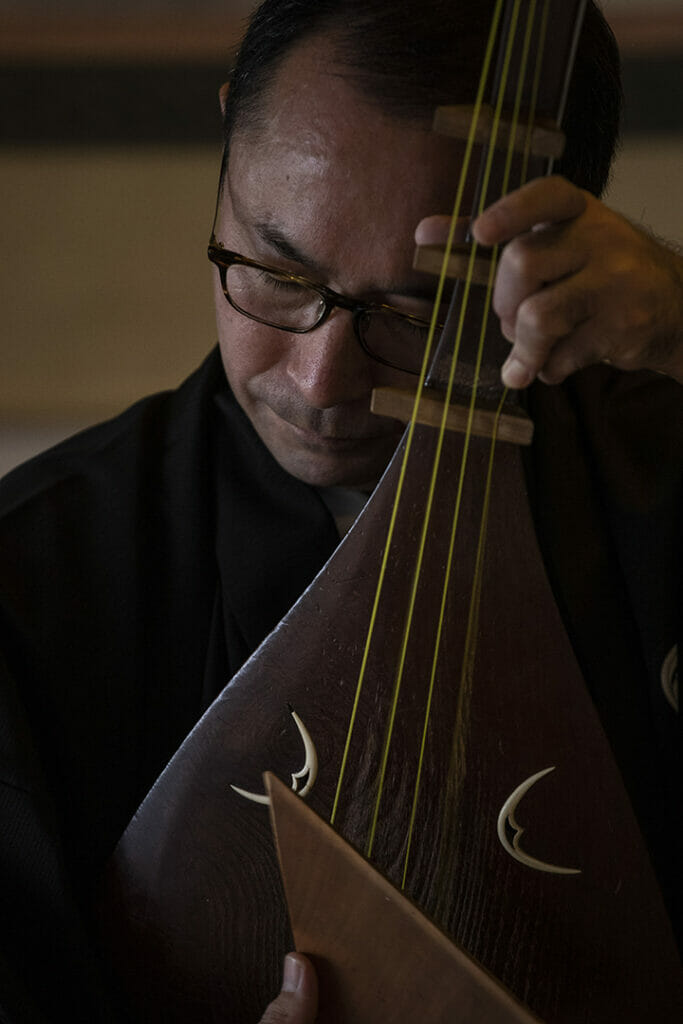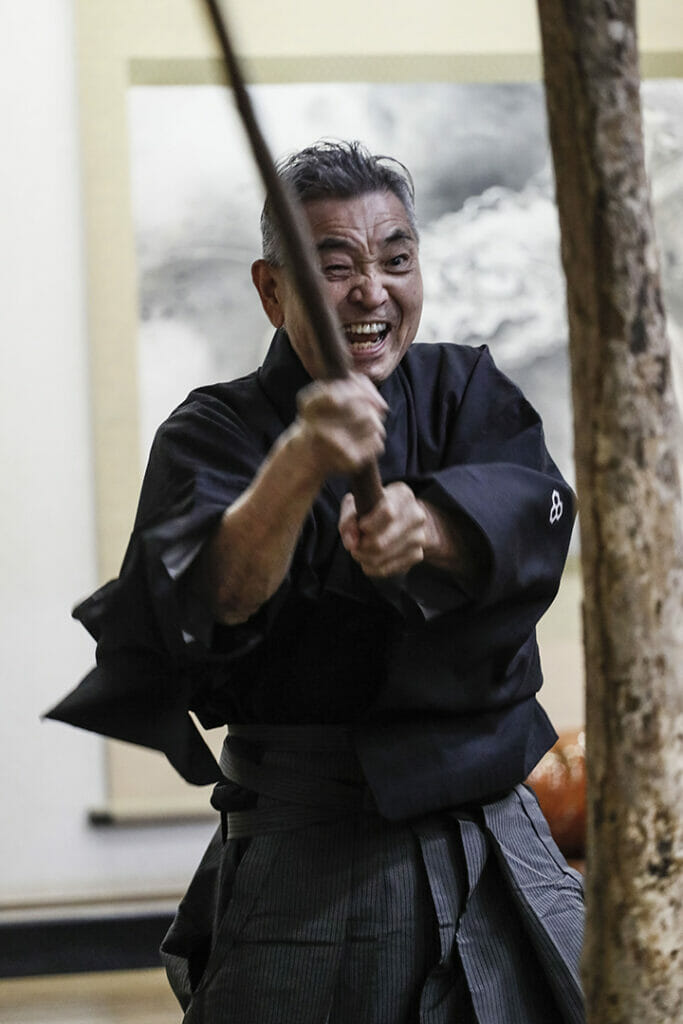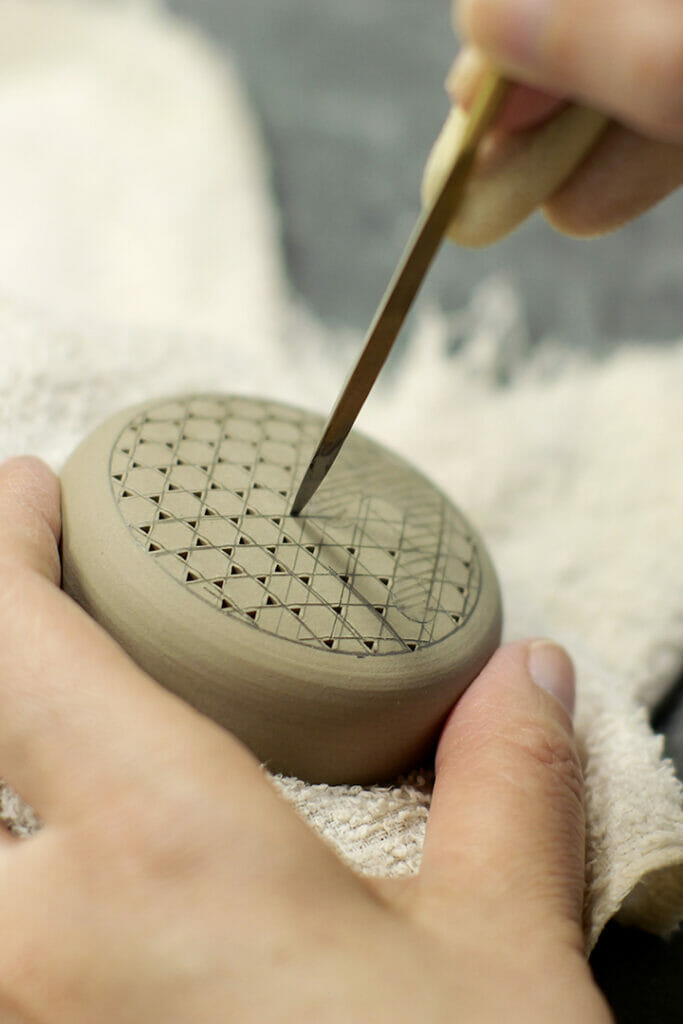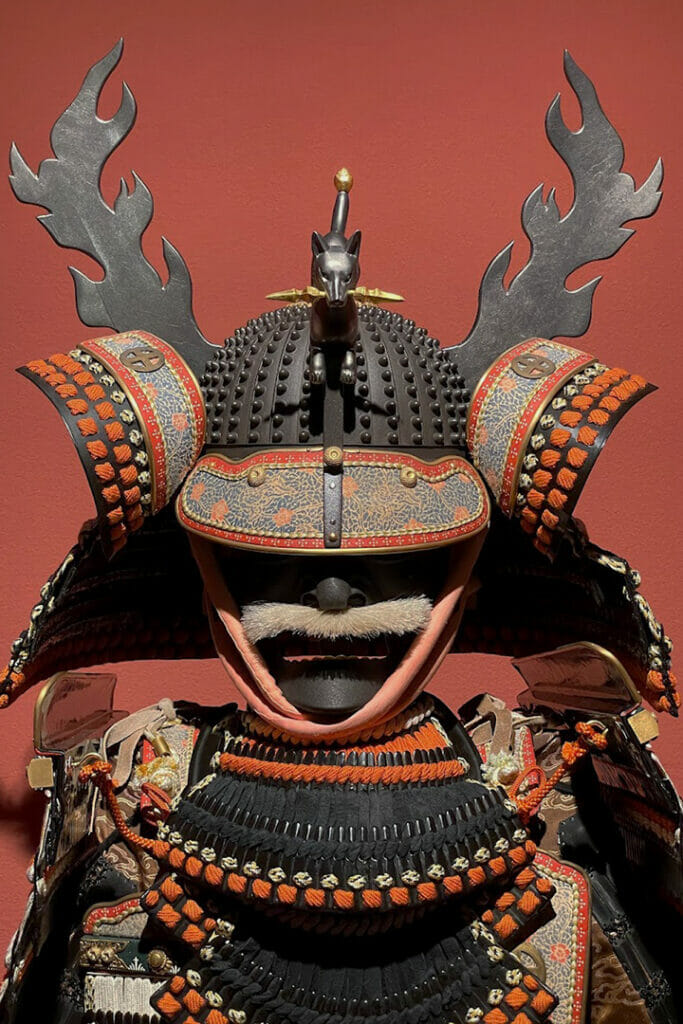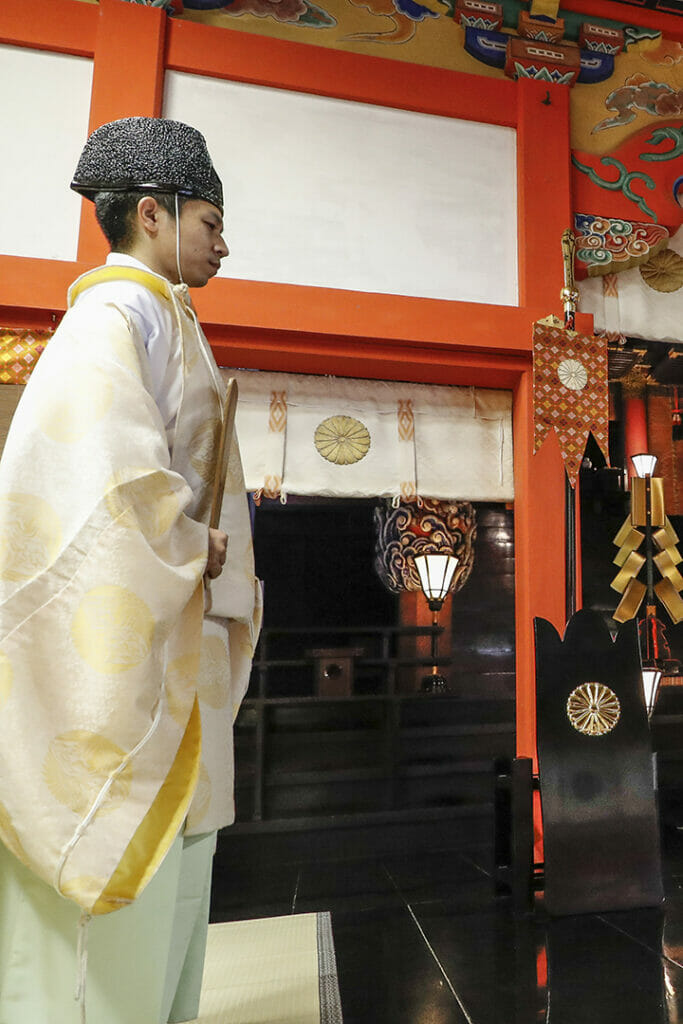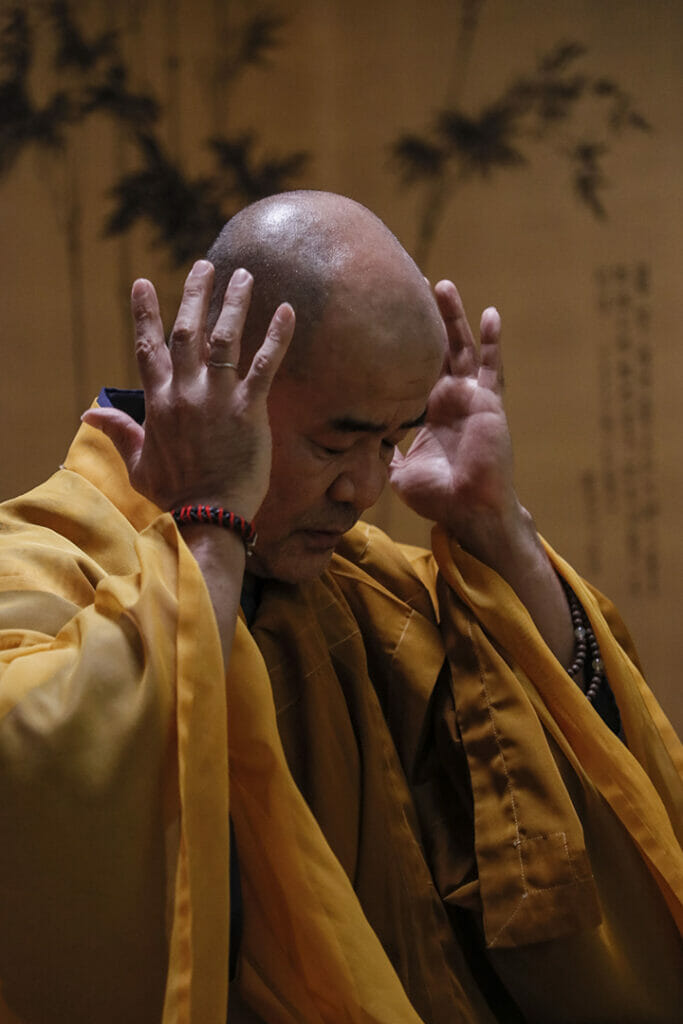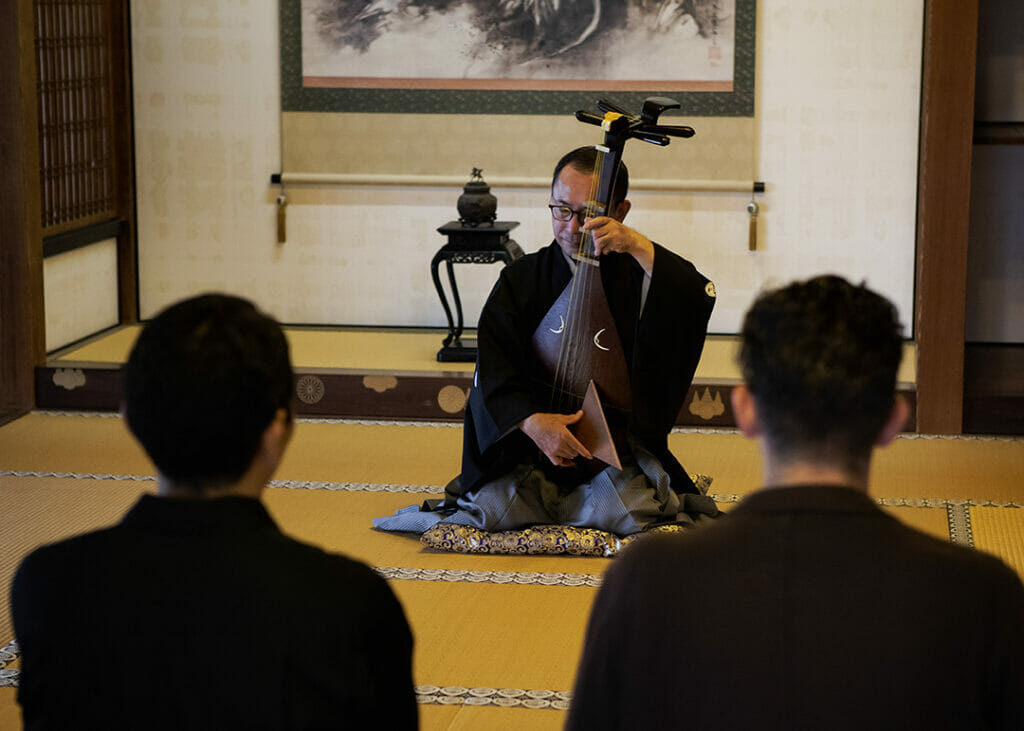
Satsuma Biwa
Satsuma Biwa is a stringed instrument resembling a lute that was used to accompany narrative storytelling. The samurai of Satsuma were unusual in that they played instruments, something not normally associated with the warrior class. For over 500 years the Satsuma Biwa was used as an educational tool to teach moral behaviour and bravery to each generation of samurai.
Enjoy a private performance from Head Priest of Kagoshima Shrine Yamashita Tsuyoshi, one of Japan’s leading players, renowned for his powerful performances featuring reverberating vocals and intense strumming.
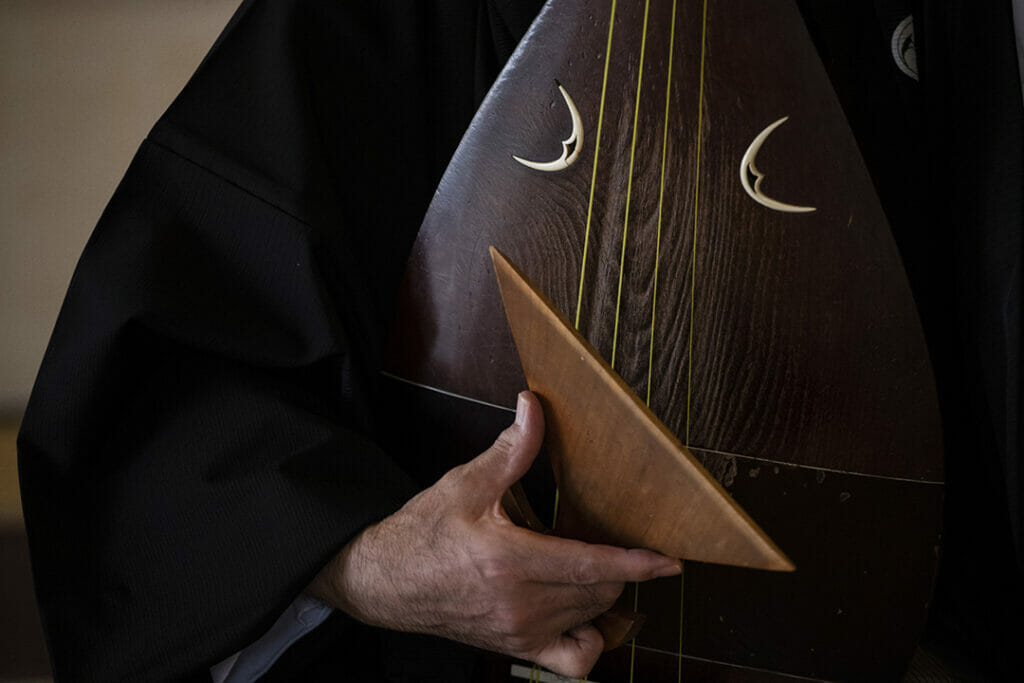
Private Performace
Satsuma Biwa was said to not be a performance for people to listen to, instead it was a way of correcting the heart and mind. Before playing it is important to forget the self and devote your entire being to the instrument.
The biwa is carved from mulberry and has four strings of silk. It is struck by a large plectrum called a bachi. Intended to be played for a small audience in a small room, the songs performed tell stories of bravery, loss, and noble deeds, intended to make the samurai reflect on their own lives and be inspired by the warriors of old.
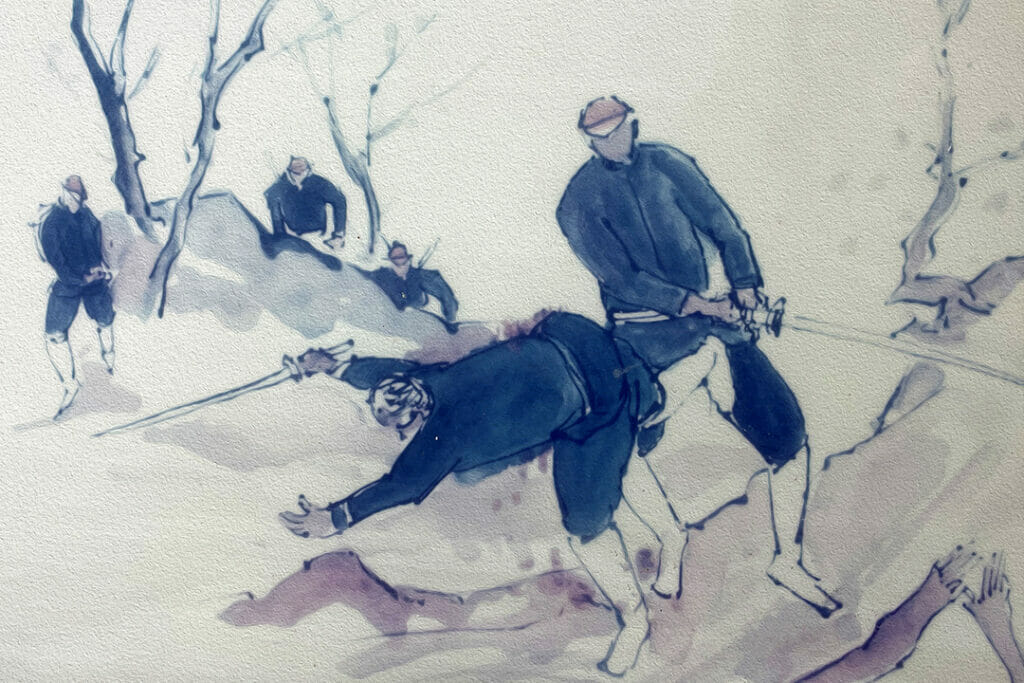
Fall of the Last Samurai
One of the best known Satsuma Biwa pieces is a fairly modern arrangement, written in the late 19th century by statesman Katsu Kaishu. This lament tells of the final battle of the “last samurai” Saigo Takamori, and his death on Mt Shiroyama. Listen for the crescendo as the battle intensifies and rain begins to pour.
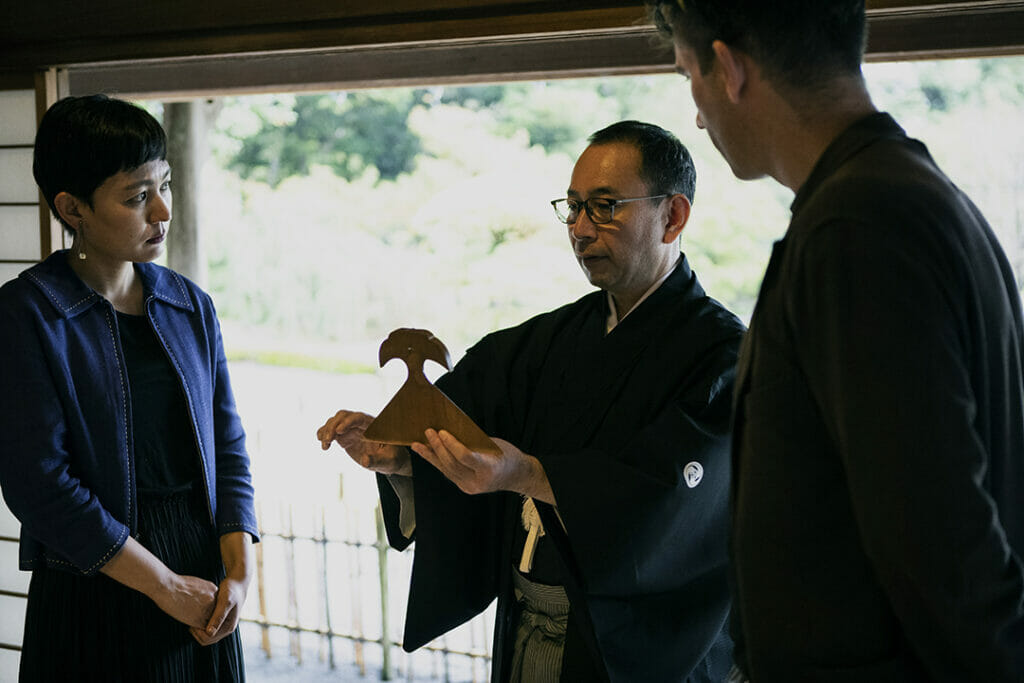
Connect with the Past
The Battle of Shiroyama meant the downfall of the samurai, but their mindset still lives on with us today through a handful of traditions that have been kept alive by dedicated students in the 150 years since. Speak directly to Yamashita Tsuyoshi about his thoughts on the Biwa and how the mindset of the samurai is being kept alive in Kagoshima even today.
